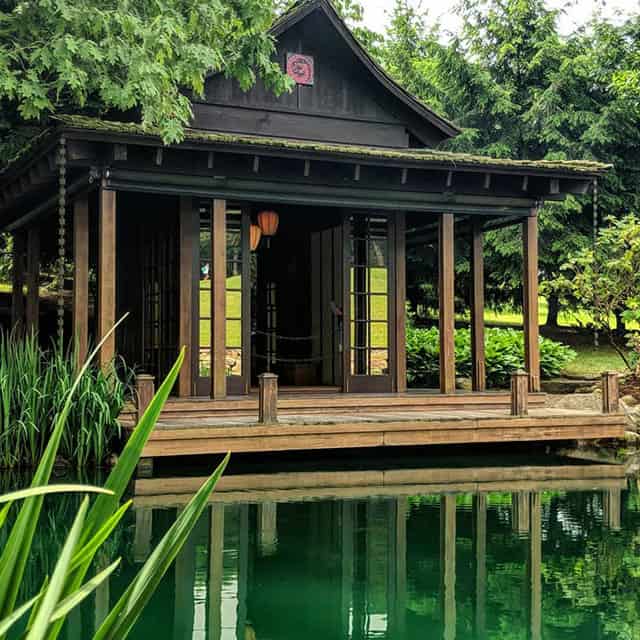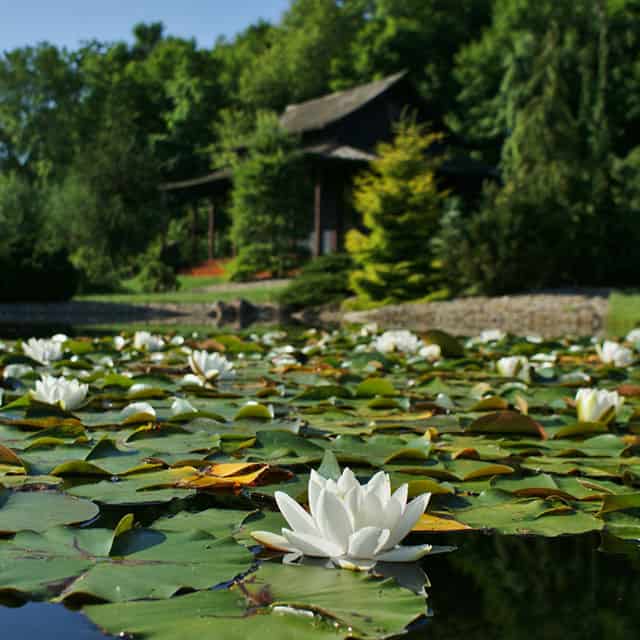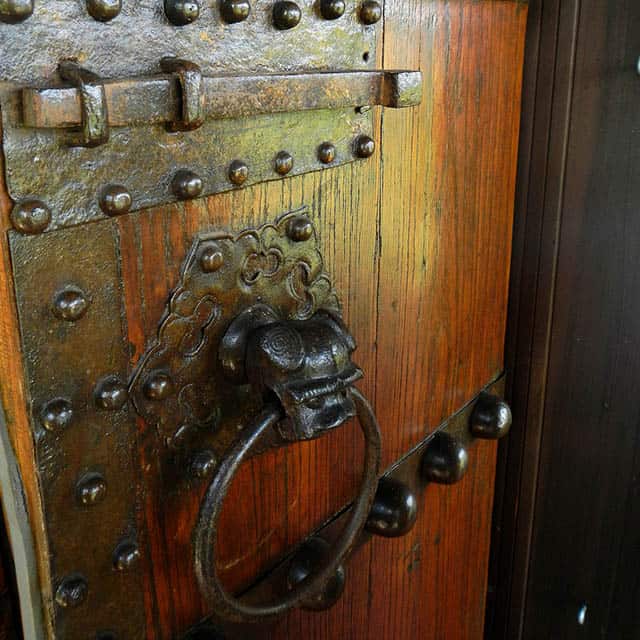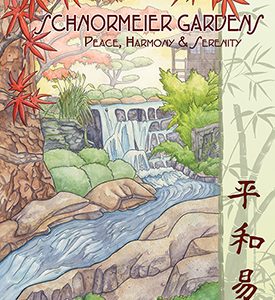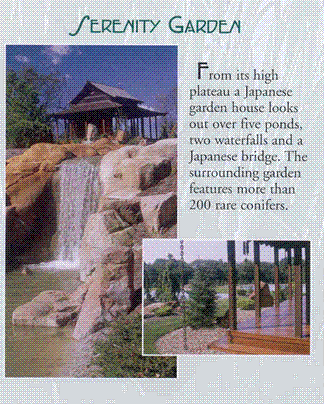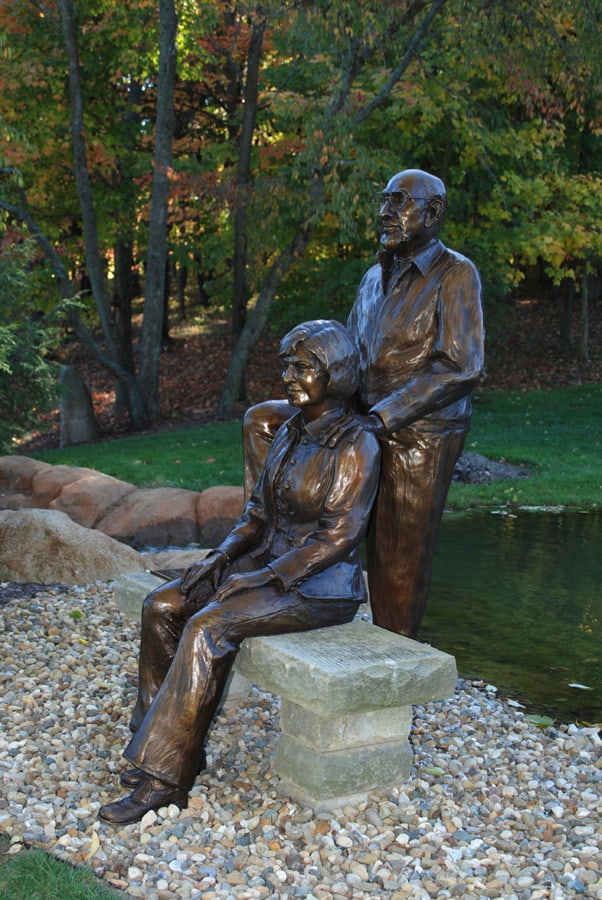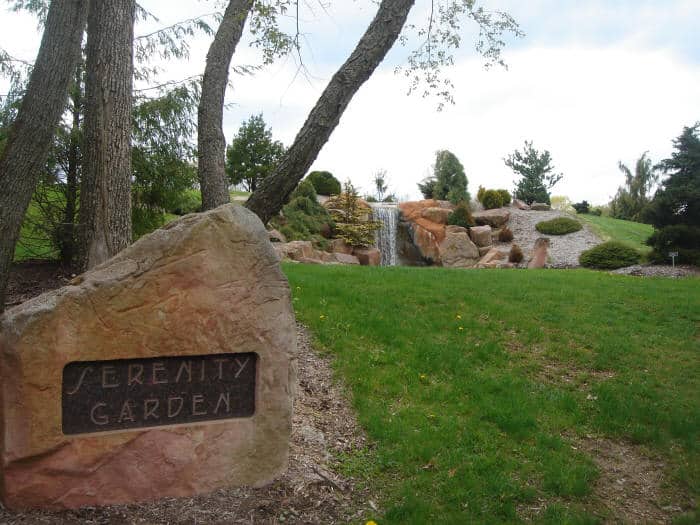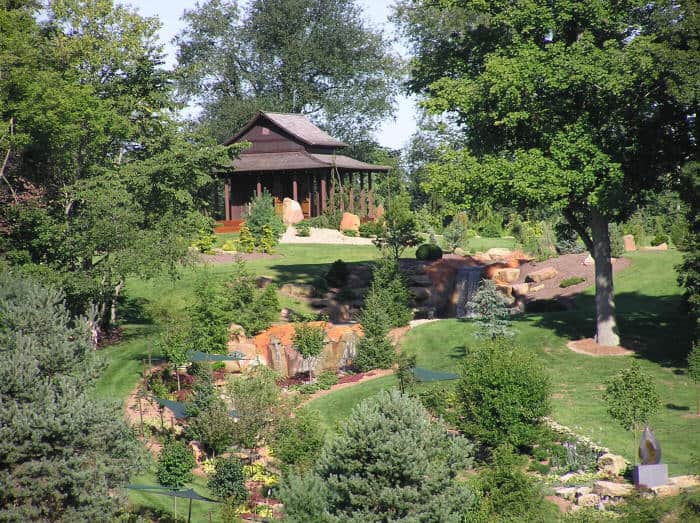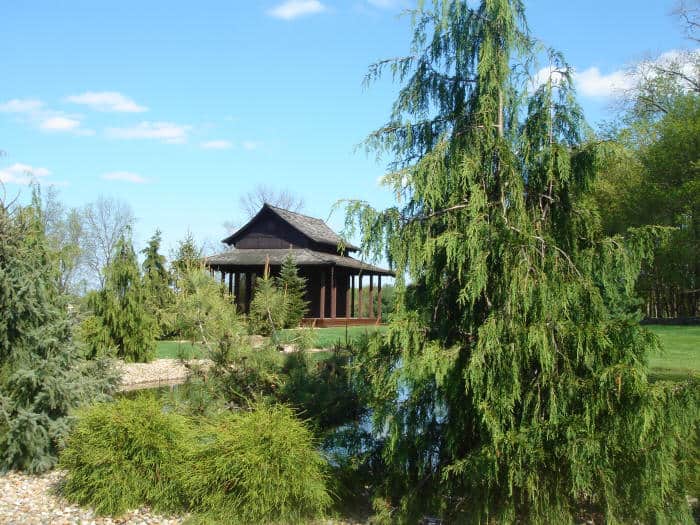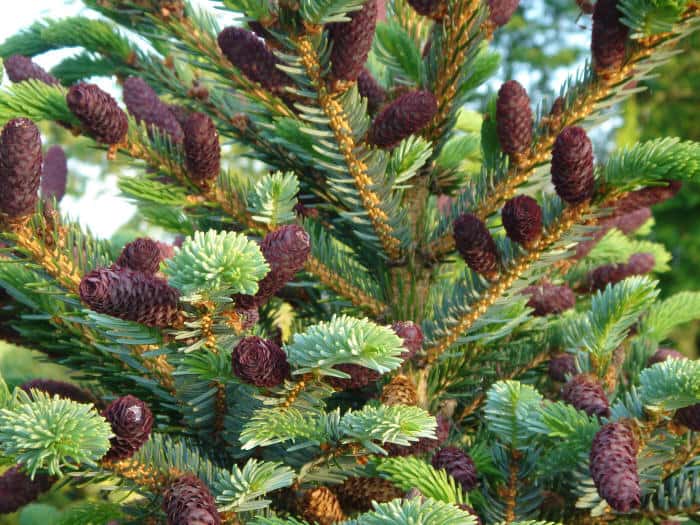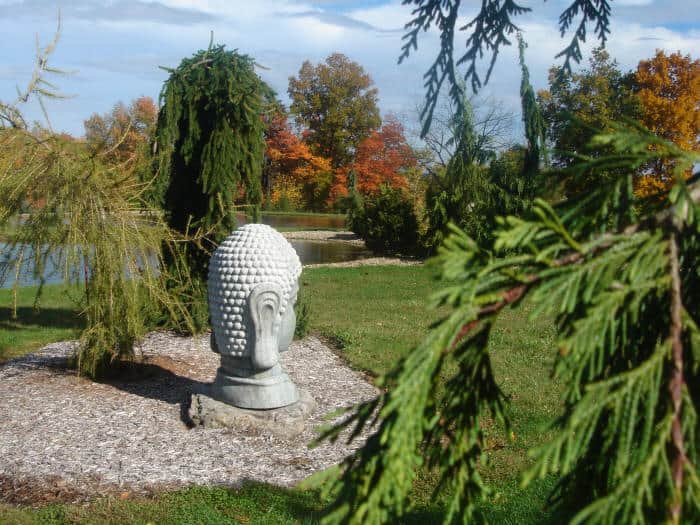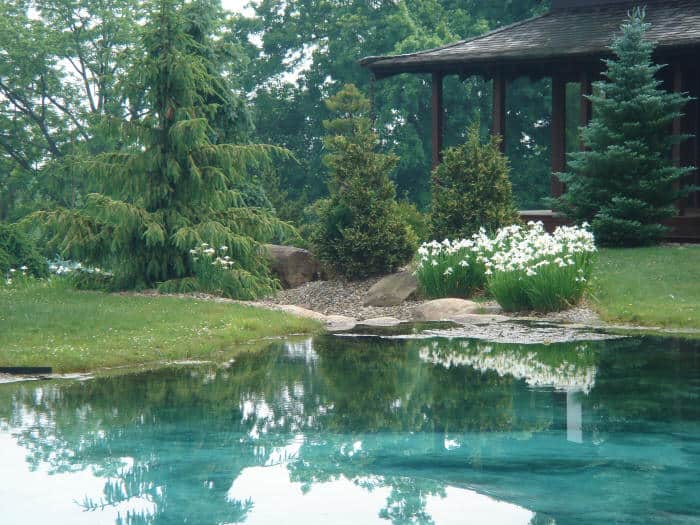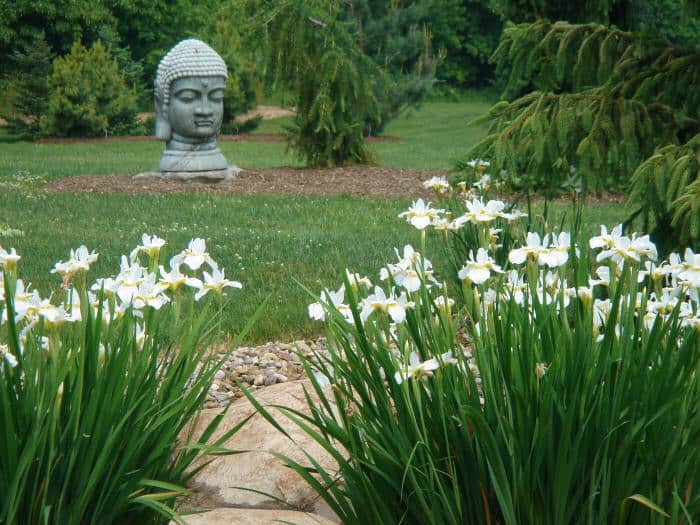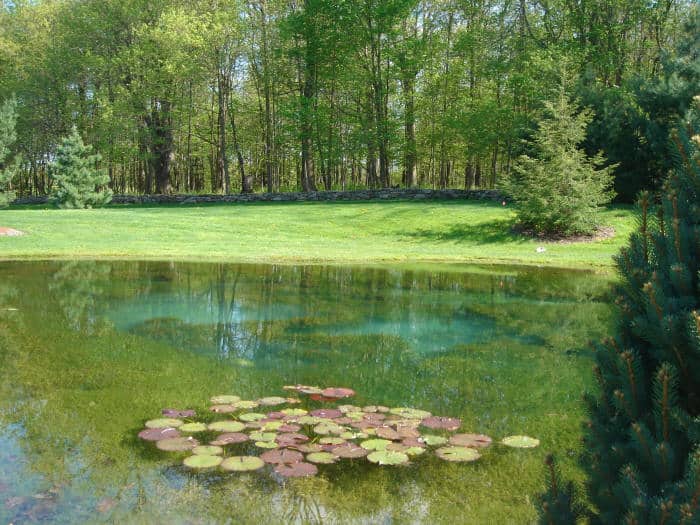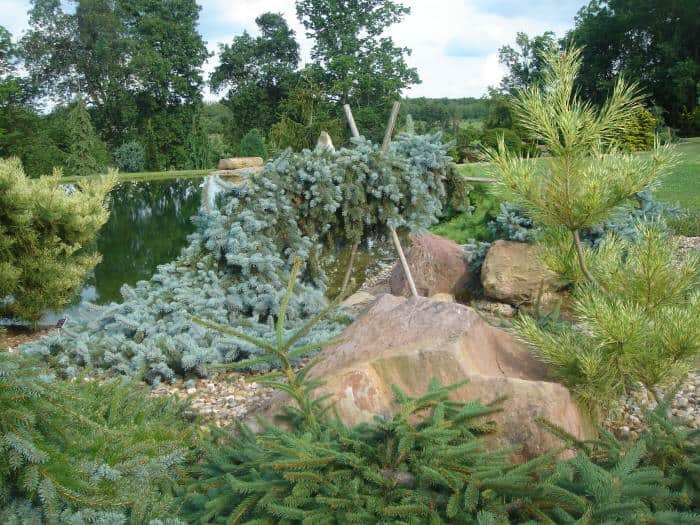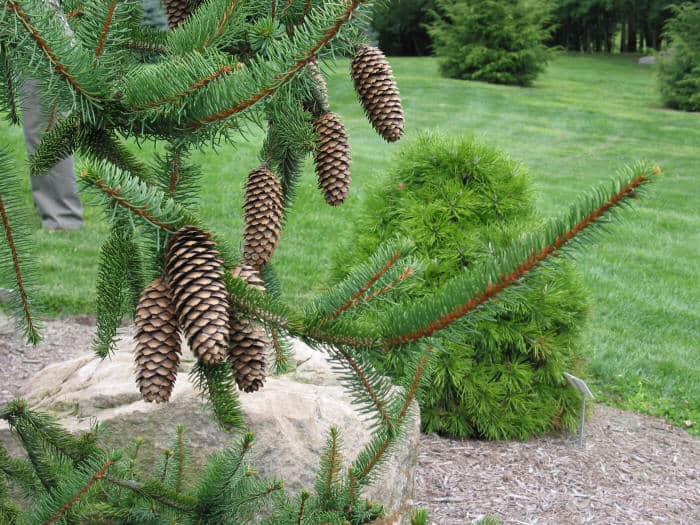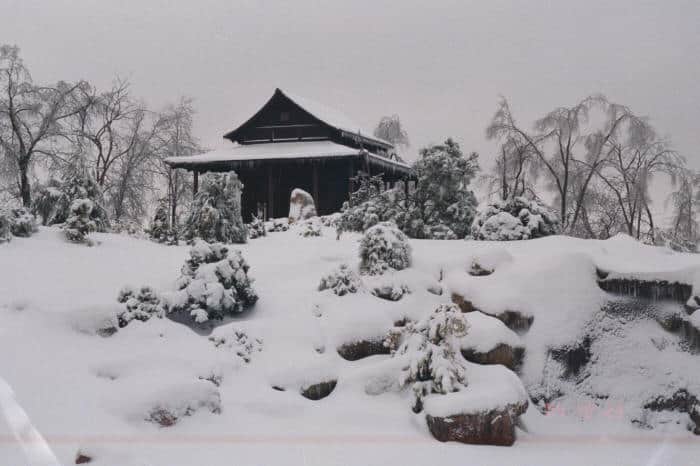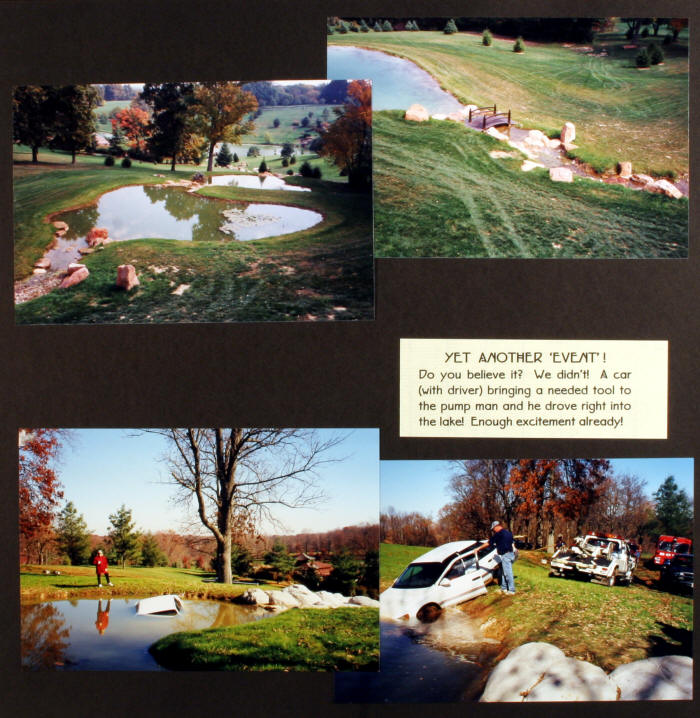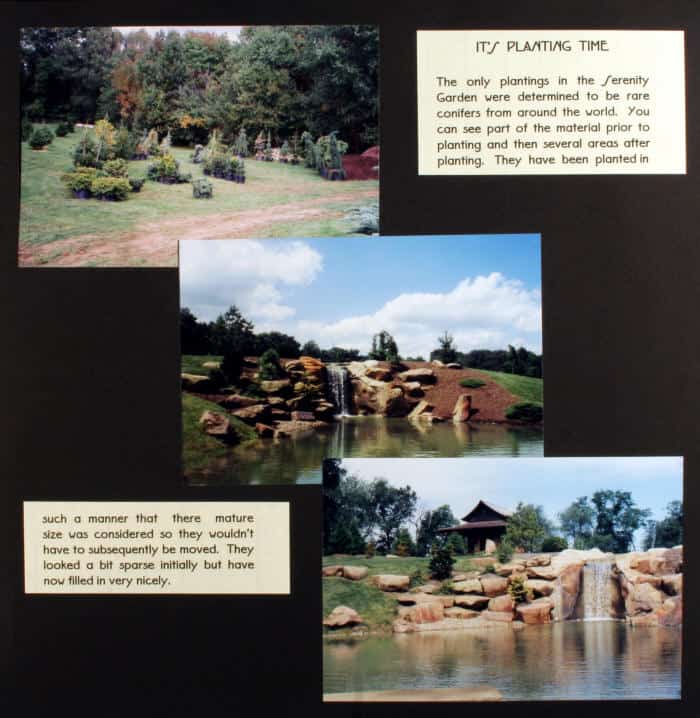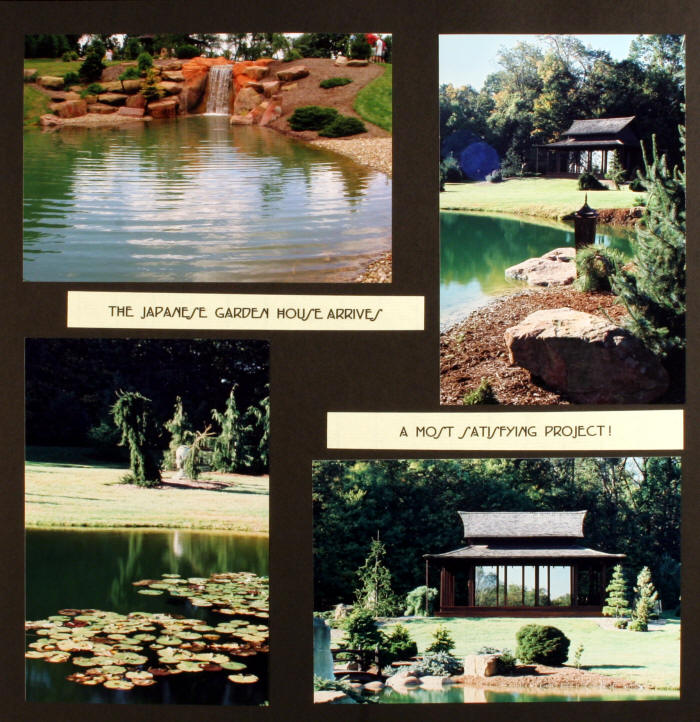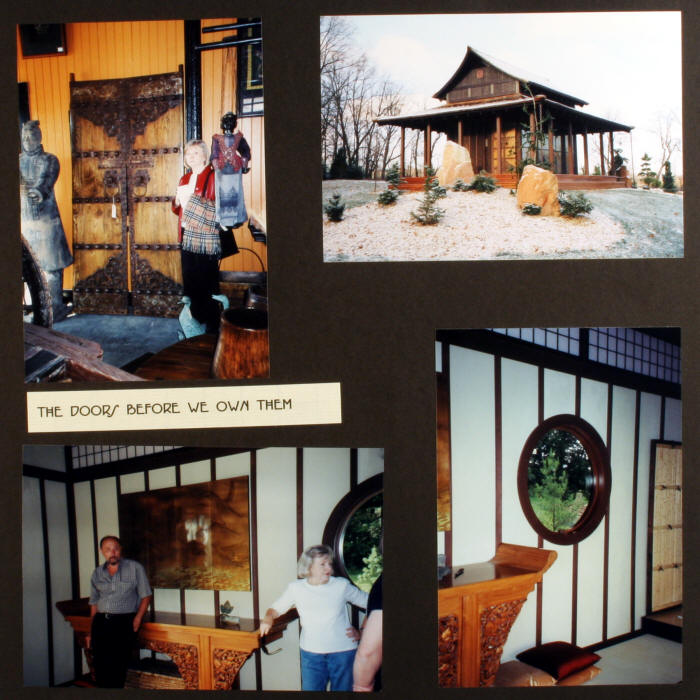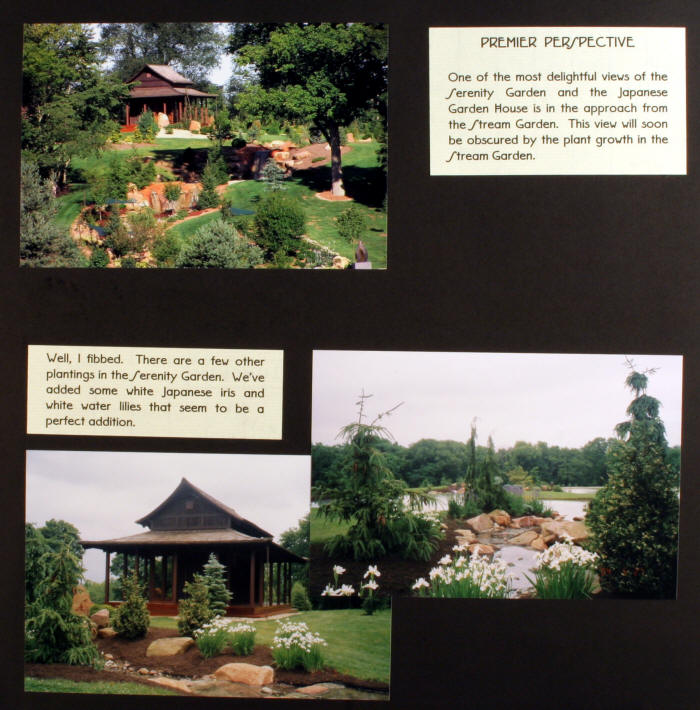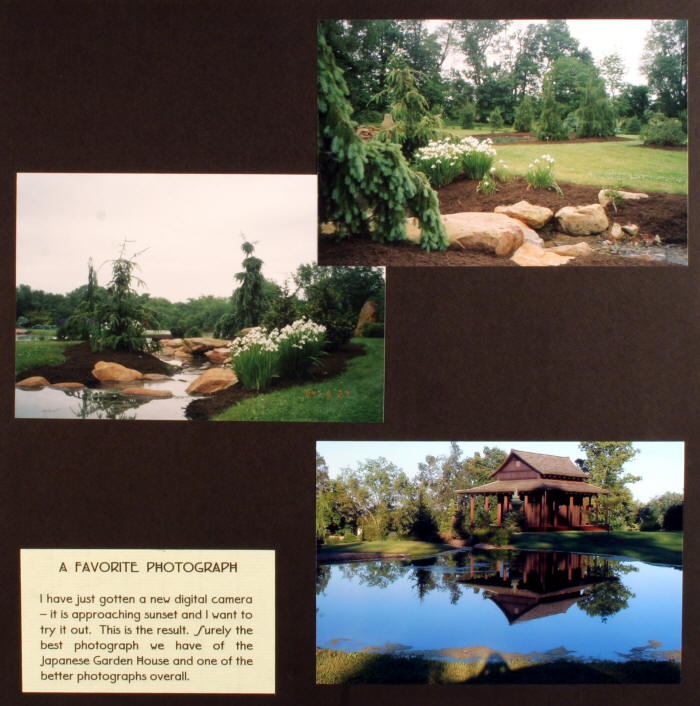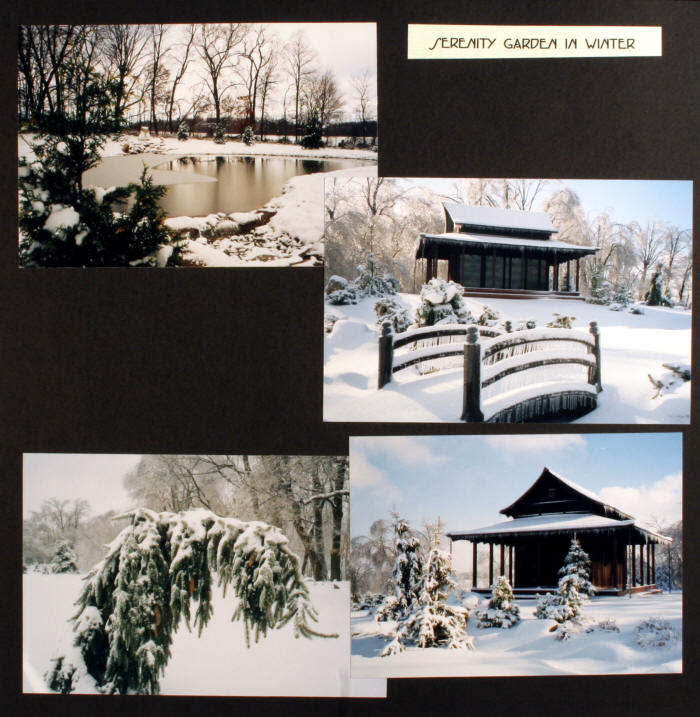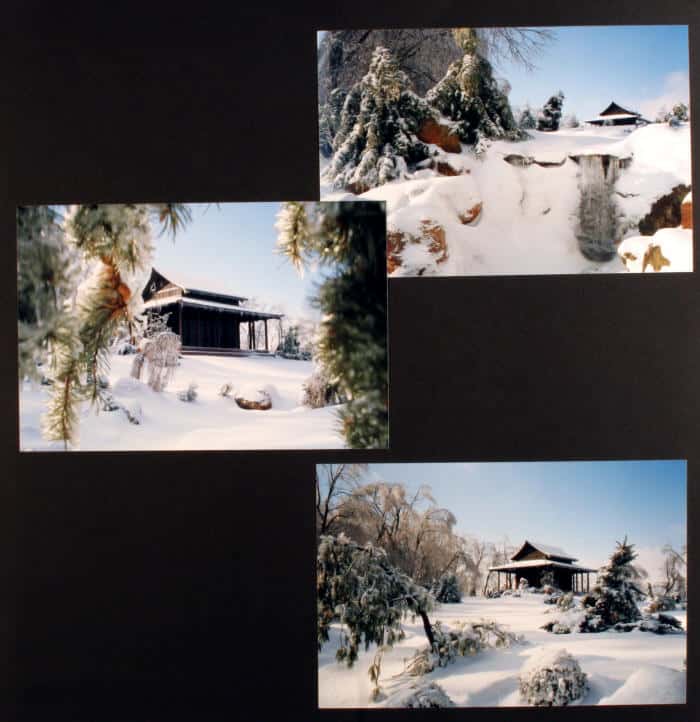
The entire area behind the house and on top of the hill, surrounded by mature hardwoods, is referred to as Serenity Garden as it is the most serene area of the Gardens.
The Japanese Garden House is set upon a raised plateau surrounded by ponds, streams, waterfalls and rare conifers. A good definition of conifer trees is that they are cone bearing. Rare conifers area actually mutations of ordinary conifers that may result in unusual shapes, colors and sizes. There are several hundred in the Serenity Garden that have originated from the far corners of the world.
Further to the north is a young conifer forest comprised of eleven varieties of spruce, hemlock, pine and fir trees. Surrounding this entire nine-acre area is a border of mature hardwood trees. You will notice how the immediate area blends into the conifer forest and then into the pre-existing mature hardwoods. The use of this ‘borrowed scenery’ is known as shakkei in Japanese and is an important design element in Japanese gardens so the elements blur the distinctions of what was planted and what is natural.
The Japanese arch bridge contributes to the overall feeling of an Asian garden. The caps (or finials) are top on top of the posts are called giboshi and are of ancient design and mad of cast bronze. They were acquired on a trip to Japan in 2001. In Japan they would only be used on a large and important public bridge–not as ornament in a private garden.
The water source for all of the lakes and streams is quite varied. The principal source is ground water (run off) form approximately one hundred surrounding acres. Secondly, there is a substantial spring at the base of the red Chinese bridge near the large waterfalls. Additionally, there is another spring directly south of the main house where the six foot tall bronze frog is standing. Finally, there is a deep well at the head of the highest point on the property in the southwest corner of the Serenity Garden that provides yet another water source. This water flows through all of the various streams and ponds and exits through the stream along the path in the Woodland Garden.
The Japanese Garden House was designed as a place for taking of tea, viewing the surrounding gardens and meditating. Garden houses pre-dated and are considerably larger than teahouses. The inspiration for this garden house came from one in Takamatsu, Japan and was built during the Edo era, which was 1615 to 1868.
The structure itself is a twelve mat garden house. The number of mats refers to the Tatami (rice straw) mats that are always three feet by six feet and determine the size of the structure. The mats are never walked on with shoes…only with stocking feet. This is a sign of respect and also a practical matter as the mats are easy to soil, hard to clean and wear out quite rapidly.
The Japanese Garden House was designed as a place for taking of tea, viewing the surrounding gardens and meditating.
In the northwest corner is a Tokonoma. This is a small alcove where artwork, ikebana, scrolls an votives can be displayed. Jane Dunnewold, an internationally known fabric artist, author and lecturer, created the feature piece of fabric art. The altar table in the northeast corner is an Asian antique piece of rare beauty but has no particular significance in this setting. The screen above the table featuring cranes is typical in garden houses and an actual visit by a crane is a symbol of good luck. We have to be satisfied here with painted cranes or the live great blue heron (that are a sign of bad luck) as they the Japanese Koi in the ponds.
The garden house was completed in 2002 and is made of completely natural materials. It is in the choice of materials and craftsmanship with which it is assembled that the garden house attains its greatest elegance. The framework is all of locally grown white oak and the decks are constructed of ipe’…a very dense tropical hardwood. As you entered you may have noticed the antique entrance doors that are obviously of Asian origin and are through to be more than two hundred years old.
Please enjoy your visit to the Gardens and the grand vistas and intimate niches. We hope you will find serenity here.

